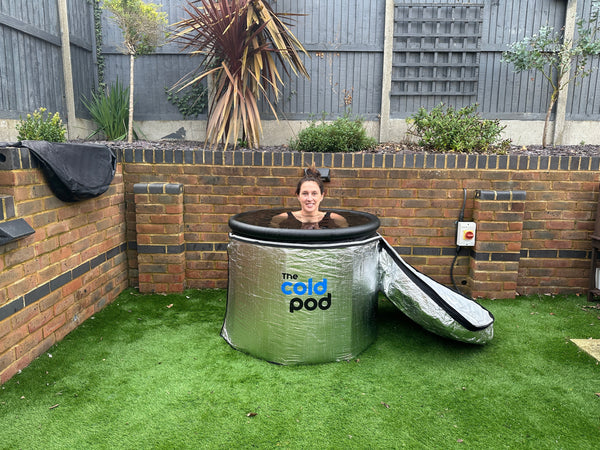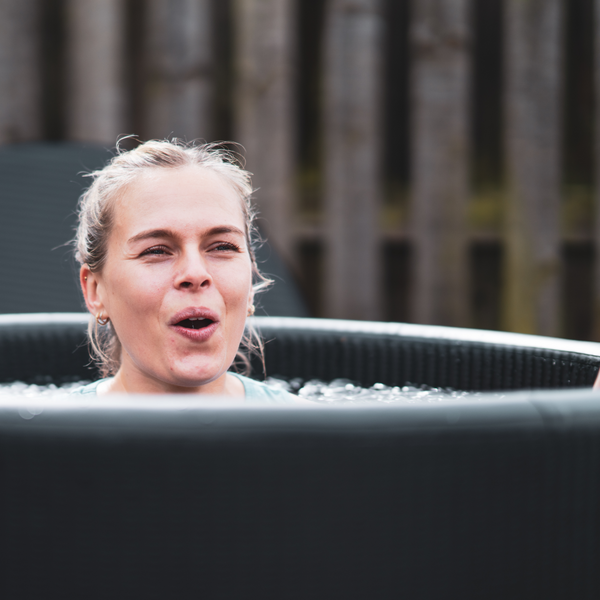Water has long been utilised in various forms of therapy, and ice water immersion therapy post-exercise has gained popularity, particularly among elite athletes. Plunging into an ice bath at a chilling temperature of 12–15°C has become a common practice, believed to alleviate muscle pain and soreness following intense training sessions and competitions.
Mechanisms of Ice Bath Therapy
So, what drives these athletes to subject themselves to the bone-chilling experience of ice baths? Are the purported benefits of reduced pain, swelling, and improved function merely the result of a placebo effect? In this blog, we will delve into the mechanisms postulated to explain the use of cold water immersion therapy post-exercise and explore the current state of research in this area.
With intense exercise comes the inevitable microtrauma and the tearing of muscle fibres. This muscle damage serves as a stimulus for muscle cell activity, leading to long-term muscle hypertrophy, repair, and strengthening. However, it is also responsible for the delayed onset muscle soreness (DOMS) that often manifests 12 to 72 hours after exercise. Ice water immersion therapy has been proposed as a means to alleviate this post-exercise pain and soreness.
One of the mechanisms attributed to the effectiveness of ice baths is the constriction of blood vessels caused by cold temperatures. This constriction is believed to aid in flushing out waste products, including lactic acid, from the affected muscle tissue. By facilitating the removal of metabolic by-products, ice water immersion may contribute to a faster recovery process.
Furthermore, the cold temperature of the water exerts a reducing effect on metabolism, slowing down physiological processes. This reduction in metabolic rate can potentially help alleviate inflammation, swelling, and tissue breakdown associated with intense exercise. By creating a colder environment, ice baths may assist in controlling the inflammatory response and promoting tissue repair.
Interestingly, ice water immersion has also been suggested to play a role in shifting lactic acid. Lactate production is a common occurrence during exercise, depending on its duration and intensity. The ability to clear lactate during the recovery phase is essential, and the process involves factors such as local blood flow, chemical buffering, and the conversion of lactate to pyruvate in various tissues. While the exact mechanism by which ice baths aid in lactate removal is not fully understood, some studies have shown that contrast water therapy, which includes cold water immersion, can help hasten the decrease in lactate levels during recovery.
Case Study
“J Emergy Trauma Shock” Fatimah Lateef (2010)
The case involves, a 25-year-old male marathoner. He came to the A and E for lower limb pain 12 hours after completing a marathon. He had pain over his calf muscles as well as quadriceps bilaterally. He could walk but had pain as he tried to squat or get up from a sitting position. He usually had some degree of such discomfort after a long run but this was the worst he had encountered. He mentioned that he had dipped himself into a tub of ice immediately after he completed the 42-km run in 2.5 hours. Examination showed no external injuries and the muscle power was normal in all groups, as was the neurological examination.
The athlete was in good physical condition, regularly trained, and had no prior medical history. He attributed his regular use of ice water immersion therapy to help alleviate muscle soreness and tiredness.
To assess the medical status of the athlete, several investigations were conducted. Full blood count, renal panel, electrolyte levels, and creatine kinase levels were examined. The results of all the investigations were within normal ranges.
This clearly shows the benefits of ice baths.
Discussion
Muscular soreness can occur for a number of causes, including lactic acid build up; injury to the tissues that connect muscles; inflammation and muscular damage, and prolonged muscle tension.
When an athlete has a lot of muscle soreness, it can hinder performance and raise the possibility of more injuries if they begin training too soon. Because the pressure in the arteries increases during activity, blood fluid enters the muscles. The muscles enlarge as a result, and the blood’s fluid content falls. Active recovery techniques, such as taking ice baths, can assist decrease swelling and improve blood circulation. The amount of lactic acid in an athlete’s blood after exercise decreases as they engage in active recovery. Ice baths provide similar physiological effects to active recuperation but don’t need additional energy. Sitting in cold water causes a fluid to migrate into your blood vessels from the outside of your body, which lessens swelling and inflammation. The improved blood flow in the body and improved cardiac function are both benefits of the higher blood volume. None of this requires additional energy.
Studies
There are a lot of studies that show the benefit of ice baths on recovery:
Study: “Cold water immersion recovery after simulated collision sport exercise” (Wilcock et al., 2006)
Summary: The study showed that cold water immersion had some positive effects on recovery. The participants in the cold-water immersion group experienced significantly lower levels of muscle soreness at 24, 48, and 72 hours compared to the passive recovery group.
Study: “Recovery From Exercise-Induced Muscle Damage: Cold-Water Immersion” (Abd-Elbasset Abaïdia, et al., 2016)
Summary: “Demonstrated a moderate reduction in muscle soreness 48 hours after exercise. This indicates that cold water immersion can effectively alleviate soreness and discomfort experienced after intense physical activity.”
Conclusion
Ice water immersion therapy post-exercise has gained popularity among elite athletes for its potential benefits in alleviating muscle pain and soreness. Through the constriction of blood vessels, ice baths are believed to flush out waste products from affected muscle tissue, contributing to a faster recovery process. Additionally, the cold temperature of the water can reduce metabolism, thereby aiding in controlling inflammation, swelling, and tissue breakdown. Ice baths may also play a role in shifting lactic acid, a common occurrence during exercise, which is essential to clear during the recovery phase. The case study presented further supports the benefits of ice baths in alleviating muscle soreness and tiredness. By reducing swelling, increasing blood flow, and improving cardiovascular function, ice baths offer a passive recovery strategy that does not require additional energy expenditure. While further research is needed to fully understand the underlying mechanisms, ice water immersion therapy remains a popular choice among athletes seeking effective post-exercise recovery methods.







